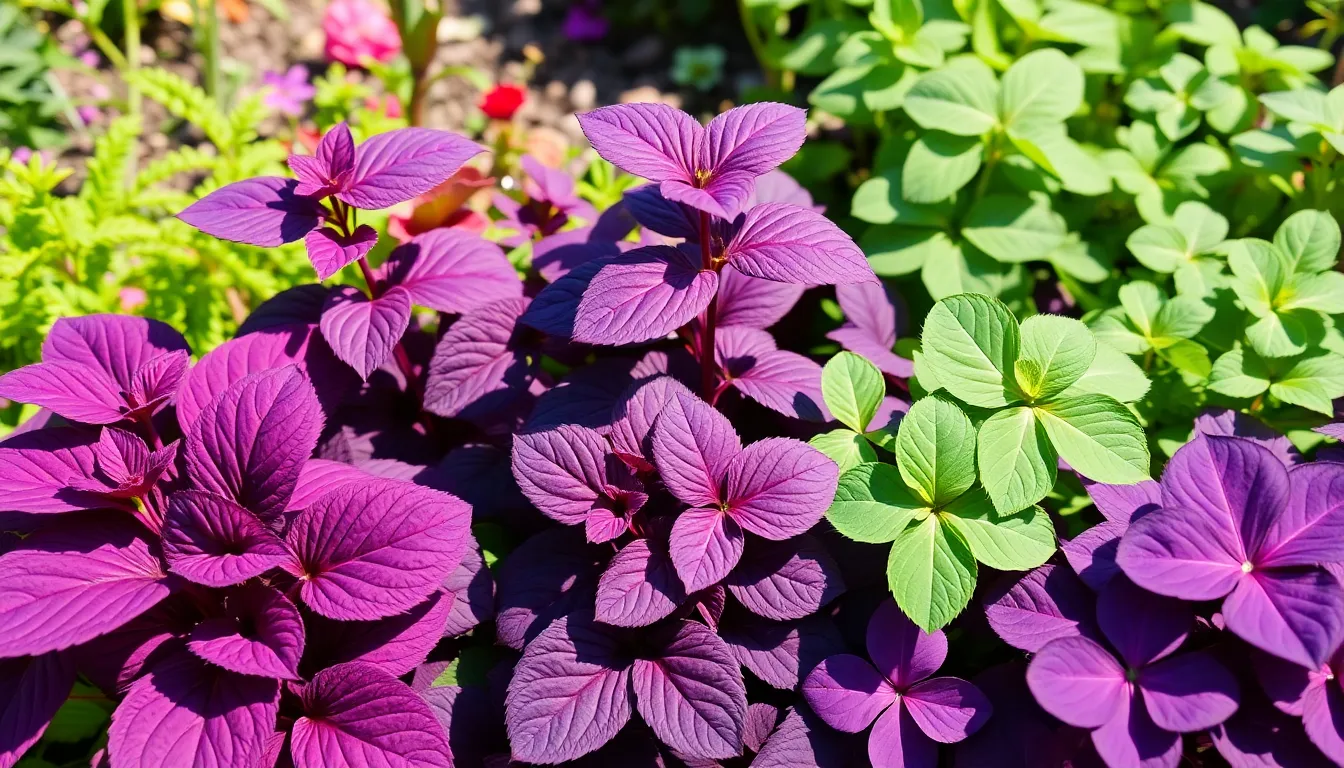Purple leaf plants are like the quirky relatives of the plant world—always drawing attention with their vibrant hues and unique personalities. Whether they’re flaunting their royal shades in a garden or adding flair to indoor spaces, these plants are a sight to behold. But identifying them can feel like a game of botanical hide-and-seek.
Purple Leaf Plant identification
Purple leaf plants comprise a diverse range of species known for their striking foliage. These plants display varying shades of purple, adding visual interest to gardens and indoor environments. Popular purple leaf plants include varieties like Coleus and Purple Heart. Each plant features unique characteristics that contribute to its appeal.
Identification traits often involve examining leaf shape, size, and texture. Some plants exhibit broad, flat leaves, while others feature elongated or serrated edges. Color intensity can differ among individual plants and environmental conditions. For instance, sunlight exposure may enhance color vibrancy, making identification easier.
Growth habits vary widely within this group. Some purple leaf plants grow as small ground covers, while others reach several feet in height. Landscaping choices may involve using them as focal points or accents in garden beds. Their adaptability allows for successful growth in various climates and soil types.
Caring for purple leaf plants often involves providing adequate sunlight and moisture. Understanding specific watering needs and temperature preferences is crucial for maintaining plant health. Many thrive in well-draining soil, making selection important for optimal growth and longevity.
Recognizing purple leaf plants involves observing leaf characteristics, growth patterns, and care requirements. Knowledge about these plants enriches gardening experiences and enhances overall aesthetics. As they stand out in any collection, purple leaf varieties are valuable for gardening enthusiasts.
Common Types of Purple Leaf Plants

Purple leaf plants offer striking aesthetics and unique features. Here are some common varieties that stand out in gardens and homes.
Purple Heart Plant
Purple Heart Plant, also known as Tradescantia pallida, showcases vibrant, deep purple leaves. It grows rapidly, often reaching heights of 12 to 18 inches. This perennial thrives in full sun to partial shade, making it a flexible option for landscaping. Noteworthy are its small, pink flowers, which appear under optimal conditions. They add an extra layer of visual interest to the purple foliage. Purple Heart is often used as a ground cover, providing a rich contrast to green plants.
Purple Basil
Known for its culinary uses, Purple Basil features dark purple leaves that effectively enhance dishes with a unique flavor. The plant, Ocimum basilicum ‘Purpurascens’, thrives in warm climates and full sunlight. In addition to culinary benefits, its decorative nature makes it a popular choice for herb gardens. Leaves tend to have a slight sheen, setting them apart from regular basil. Purple Basil can reach heights of 12 to 24 inches while attracting pollinators like bees and butterflies, contributing positively to the garden ecosystem.
Four-Leaf Clover
Four-Leaf Clover, while not always recognized for its purple leaves, can exhibit a purplish hue under certain conditions. Trifolium repens var. agrarium, commonly found in lawns, is a symbol of good luck. Size typically ranges from 1 to 3 inches per leaf. Sunlight exposure significantly affects the intensity of coloration, enhancing the purple appearance. These clovers are often sought after by collectors and those who appreciate luck-filled symbolism in their gardens.
Identifying Characteristics
Identifying purple leaf plants involves recognizing their unique features and traits. Attention to detail simplifies the process of distinguishing these striking species.
Leaf Color and Shape
Leaf color varies in shades from deep violet to soft lavender. Many plants, like Purple Heart and Coleus, showcase vibrant hues that can differ based on environmental factors. Leaf shape contributes to identification; some feature broad, rounded leaves while others possess slender, elongated forms. Texture also plays a role, as certain plants have glossy, smooth surfaces, while others display a more matte finish. These characteristics provide a foundation for recognizing and appreciating various purple leaf plants.
Growth Habit
Growth habits among purple leaf plants vary significantly. Some, such as Purple Heart, function well as low-lying ground covers that spread gracefully across garden beds. Others, like certain varieties of Coleus, can grow upright, reaching heights of up to 3 feet. Environmental factors influence their growth patterns; adequate sunlight and moisture contribute to healthy development. Understanding these growth habits aids in selecting the right plants for specific landscaping needs and enhances the overall aesthetic of outdoor spaces.
Cultivation and Care Tips
Caring for purple leaf plants involves understanding their light and soil needs. Meeting these requirements leads to thriving, vibrant specimens.
Light Requirements
Purple leaf plants typically thrive in bright, indirect sunlight. Many varieties, like Coleus, may benefit from several hours of direct light each day. Insufficient light can result in faded colors and leggy growth. Plants placed too close to intense sunlight may suffer leaf burn. A balance ensures optimal color and form while maintaining health.
Soil Preferences
Well-draining soil is crucial for purple leaf plants. A mix containing organic matter helps retain moisture while preventing waterlogging. pH levels should range between 6.0 and 7.0, ensuring nutrient availability. Regularly checking the soil moisture is important; soil should dry slightly between waterings. Using potting mix designed for container plants may enhance drainage and support healthy growth.
Conclusion
Purple leaf plants offer a stunning addition to any garden or indoor space. Their vibrant colors and unique characteristics make them a favorite among plant enthusiasts. By understanding their distinctive features and growth habits, anyone can successfully identify and appreciate these remarkable plants.
Proper care is essential for maintaining their health and vibrancy. With the right light, soil, and moisture conditions, purple leaf plants can thrive and showcase their beauty. Embracing these plants not only enhances the aesthetic appeal of a space but also enriches the overall gardening experience. Whether for decoration or culinary use, purple leaf plants are truly a valuable asset to any plant collection.




